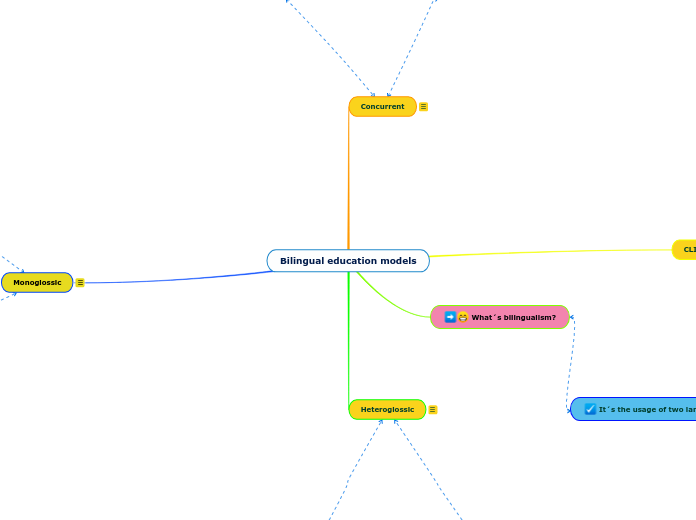CARLOS ANDRE TOBAR PATIÑO.
late-exit
It ensures the acquisition of the second language, allowing a longer transitional period for the student to master L2 in a slow pace.
early-exit
It focus on the acquisition of enough knowledge of the second language like a near-native proficiency.
CULTURE
This means a connection to the real world, so students get to know content they will need as well as developing life skills.
COMMUNICATION
This means consciousness in the language to be used based on the context.
It´s advisable to consider the following:
Language for: This refers to the language for working with the content.
Language of: When we use the lexis needed in the lesson.
(for example: Topic ¨universe¨; some lexis that will be needed are: planet, sun, stars, galaxy, etc.)
Language through: The language that moves information.
COGNITION
This refers to let students use their critical thinking, therefore, guiding the student to learning to learn.
CONTENT
It refers to multi-modal approach, the content comes from multiple sources not only form the text.
Example: articles, newspapers, videos, etc.
TRANSLANGUAGING
This refers to communication merely, not on the language itself. So, the usage of multiple linguistic features are expected.
For instance:
No problem! vamos a encontrar a solution.
CODE-SWITCHING
This is when a learner mixes two languages in a sentence, a clear example of this:
- Vamos al Shopping mall.
- Deme otro chance! etc.
DYNAMIC
It allows the usage or coexistence of different languages at the moment of communication, translanguaging is accepted since it tries to keep the development of multiple linguistic identities.
RECURSIVE
It focus on the revitalization of minority languages.
For instance, In some institutions teach a language which is in danger of extinction such as kechwa in Ecuador.
TRANSITIONAL
This programm is a transition for learners into an English-only environment in the classroom as soon as possible.
SUBMERSION
The processs of learning is given in its L2 while learners might make use of their L1 in a minority way. This is to make learners master the second language.
SUBTRACTIVE
Student L1 isn´t develop as their L2, which is the aim in the practices.
ADDITIVE
This is when the student´s L1 keeps developing while improving their L2.
IMMERSION
The student doesn´t lose proficiency in its L1 but is immersed in a monolingual environment to domain the dominant language or L2.
Some models of immersion are the following:
1) Early immersion: Given in Pre-school.
2) Delayed Immersion: Given in Primary or Elementary school.
3) Total immersion: The curriculum is explained through L2.
4) Partial Immersion: A great porcentage is taught through L2.
PRESTIGIOUS
Students learn two prestigious languages, which are kept separated in order to broaden their social interactions, for instance Chinese and English, which can be used for different purposes but the main one could be considered as business relationships.
MAINTANANCE
It keeps the preservation of L1 during the acquisition of the dominant language.
It´s the usage of two languages
Bilingual education models
Monoglossic
This type doesn´t mix the languages, it keeps them separated.
Heteroglossic
It refers to the coexistence of languages in a single tongue.
What´s bilingualism?
CLIL
This refers to an educational approach where knowledge is taught in a non-native language.
Concurrent
This carries similarities with the translanguaguing model since the usage of multiple languages isn´t forbidden, this is to eventually acquire the additional language.









